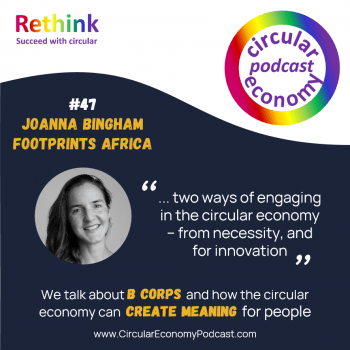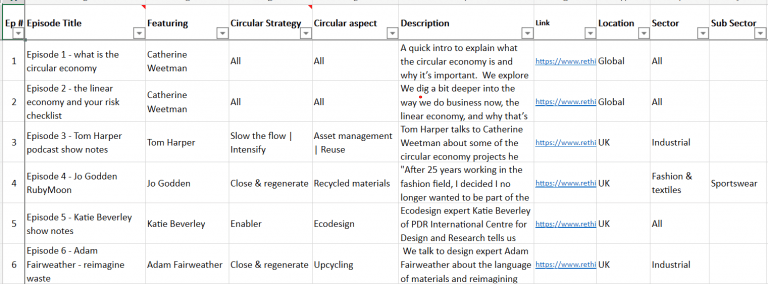Save our Soil | English Pastoral | Podcast: Joanna Bingham of Footprints Africa | Podcast index | Drawdown guide
What’s happening with you? Here in the Yorkshire Dales, spring is definitely springing out all over, though we’re still getting morning frosts (and I’m still wearing multiple layers, indoors and out!)
I’m recovering from a major IT meltdown at the end of February. We lost our emails for a day or so (between Thursday 27 Feb to Mon 1 March). If you emailed us around then, and we haven’t yet replied, please would you resend the email?
I was delighted to be part of Springfield Agri‘s Save our Soil conference in February. The event, focused on Regenerative Agriculture, sparked lots of interest and positive feedback from farmers, policymakers and those interested in how we can use different approaches to create healthy soils, improve biodiversity and draw down carbon. Springfield Agri is keeping the videos and panel discussions online for another couple of weeks. You can find it here – it’s free, but you’ll need to create a login. The circular economy session (including my presentation) is on Day 1.
A conversation just after I’d presented, with Feedback (the food campaign charity) alerted me to some of the issues linked to growing sugar beet and the use of Anaerobic Digestion. In the UK, these practices benefit from green energy subsidies.
However, there are unintended consequences linked to this. Sugar beet farming, according to this paper from Feedback, Too Much of a Bad Thing, has associated carbon emissions well above the average for root crops. I’ve used a slide showing the many different by-products from British Sugar’s refining process in lots of presentations, and had been told they sold the soil (washed off the beet) back to the farmers – but Feedback say it goes to construction and landscaping customers – not a closed loop then!
When using Anaerobic Digestion, we need to ensure we capture all the valuable nutrients from the ‘waste’ – using biorefining if appropriate – before converting the remainder into biofuels or briquettes. As Tom Ogonek from Close the Loop said, referring to waste from energy “…once you burn that, there’s nothing left!”
What we’ve been reading
Having enjoyed Cumbrian farmer James Rebanks‘ first book (A Shepherd’s Life), then heard him interviewed on various radio programmes about his second book, English Pastoral, I’d added that to my list. It arrived for my birthday and was a fantastic read. His writing is both evocative and straightforward, and he explains much of the history of industrial agriculture from the perspective of his farming boyhood and the differing approaches of his father and grandfather.
As he explains in the book, “The new farming had taken two mutually beneficial things – grazing animals and fertilizing fields – and separated them to create two massive industrial-scale problems in separate places. The farm with thousands of animals had more muck than their land could possibly accommodate, while the crop farms now had no animals, and thus no muck to fertilize plants, so were entirely reliant on Haber-Bosch fertilizers.”
After reading Silent Spring by Rachel Carson, he realises the error of modern farming approaches, and starts to investigate ‘new’ thinking about rewilding and regenerative farming.
Rebanks, like me, believes that “We need to keep unsustainably produced food out of our shops and markets; it cannot be allowed to undercut nature-friendly, high-welfare farming.”
I’ve also been asked to be part of a United Nations Association panel discussion on the Dasgupta review on the economics of biodiversity, commissioned by the UK Government. I’d heard the report discussed when in launched in February, and picked this quote out for the Save our Soil conference, from the ‘key messages’:
“At their core, the problems we face today are no different from those our ancestors faced: how to find a balance between what humanity takes from Nature and what we leave behind for our descendants. While our ancestors were incapable of affecting the Earth system as a whole, we are doing just that.”
The Listen – Circular Economy Podcast Episode 47 Joanna Bingham of Footprints Africa
Joanna Bingham, the founding CEO of Footprints Africa, is focussed on using the circular economy to support sustainable, scalable and inclusive approaches to development of local African economies.
Joanna is also a founding partner of the CE360 Alliance, and leads the Ghana chapter for the African Circular Economy Network (co-founded by my colleague Peter Desmond). She studied at Bradford University, the first degree-level circular economy course, supported by the Ellen MacArthur Foundation. Through Footprints Africa, Joanna runs a 6 month B-Corp programme to support SMEs who are positive about improving their environmental and social impact. Having worked in the investment industry for nine years, Joanna says “she is schooled in critical analysis and scepticism and is passionate about embedding social purpose in everyday activity.”
We talk about how the circular economy has huge potential to uplift people from poverty and to create meaning, how there are two ways of engaging with the circular economy – out of necessity, and to innovate – and how Footprints Africa’s B Corp programme supports entrepreneurs. Listen here, or search for Circular Economy Podcasts in your favourite podcast player.
Useful Resources
Looking for a Circular Economy Podcast episode on a specific sector, or for a particular circular economy strategy? We’ve created an index page with an interactive spreadsheet. Now, you can sort, filter and search for relevant episodes. We’ll try to keep it up to date.
The spreadsheet index includes the location of the person/organisation’s base and the industry sector related to their work. There’s also a link to the relevant episode page on our website, which has a player, shownotes, the links we mention and a transcript. Click here to open the summary page, scroll down to see the spreadsheet. There’s also a link to the summary from the Circular Economy Podcast homepage.
Resource: carbon offsets guide
If you’ve seen one of my presentations, you might remember my ‘linear economy’ flow graphic, with figures from UNEP showing that 54 per cent of global emissions are caused by extraction and processing of materials, fuels and food. I did a short blog a couple of weeks ago, looking at why Net Zero was ‘trending’ and highlighting a few of the circular economy approaches that help reduce emissions. We are all becoming more aware of how the circular economy can help reduce GHG emissions, and regenerative practices can contribute to drawdown.
This quick guide on Twitter, from Dr Jonathan Foley (creator of the excellent Project Drawdown) describes how Project Drawdown approaches carbon offsets. If you’ve not come across Project Drawdown yet, it summarises the carbon-drawdown solutions in Dr Foley’s book. You can search by sector, and then by solution/situation type. Plus, there’s a simple infographic here, showing emissions created by sector (‘Current Sources’), and emissions drawdown split into land and water (‘Current Sinks). Land sinks currently draw down 24% of global emissions and coastal and ocean sinks draw down 17%. The remaining 59% of emissions stays in the atmosphere. To achieve net zero at any given point, we need to draw 100 per cent of what we emit down into carbon sinks.
If you’re familiar with the bath-tub analogy, you’ll know that 100 per cent drawdown only stabilizes GHG levels in the atmosphere. To reduce GHG levels and reduce warming, we need to draw down more than we emit. This article on ClimateInterative.org has a good explanation and a nice graphic
Thank you letters
Thanks to Dr Philipp Schuster of Seeds for Sustainability (a fellow Permaculture enthusiast) for inviting me to join his Transforming Societies series, on Friday 19 March, 4pm UK time. You can get tickets on Eventbrite (free), here https://www.eventbrite.es/e/transforming-societies-with-circular-economy-tickets-143560456189
Thanks also to Lola Okunrinboye of the Women in Sustainability Network, for inviting Catherine to a webinar on putting the circular economy into practice. It was good to be on a panel with Izzie Eriksen of school uniform reuse initiative, ApparelXchange (interviewed on Episode 11 of the podcast), and Jane Stewart of Topolytics, which uses big data to help us get better at closing the loop on waste.
We’re happy to help with your circular projects – just hit reply!


